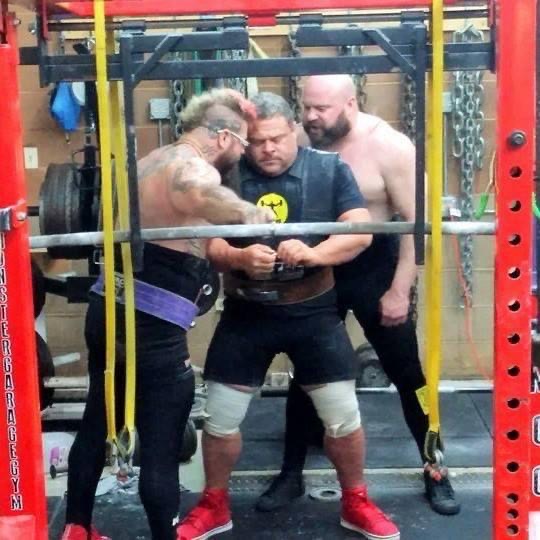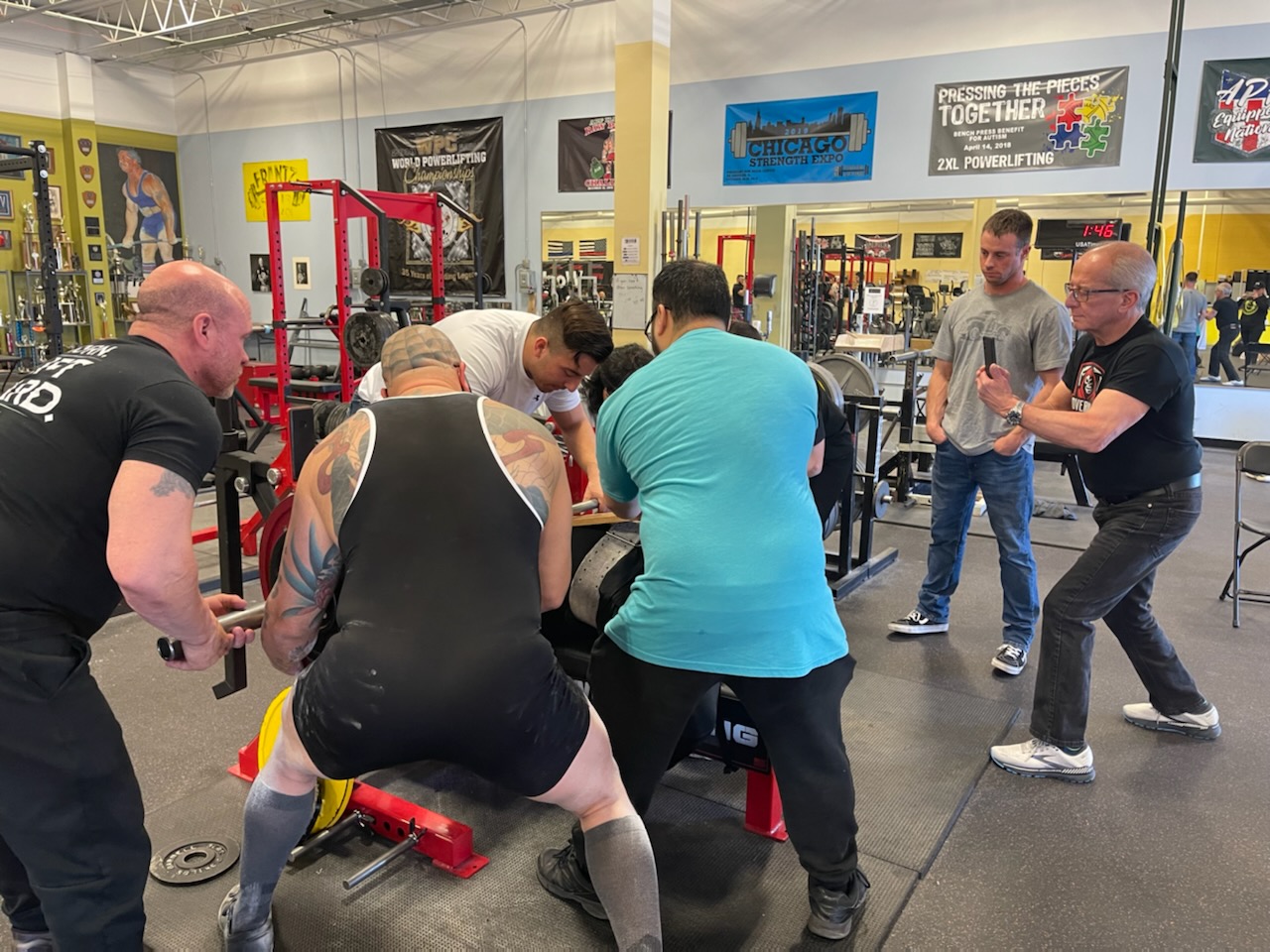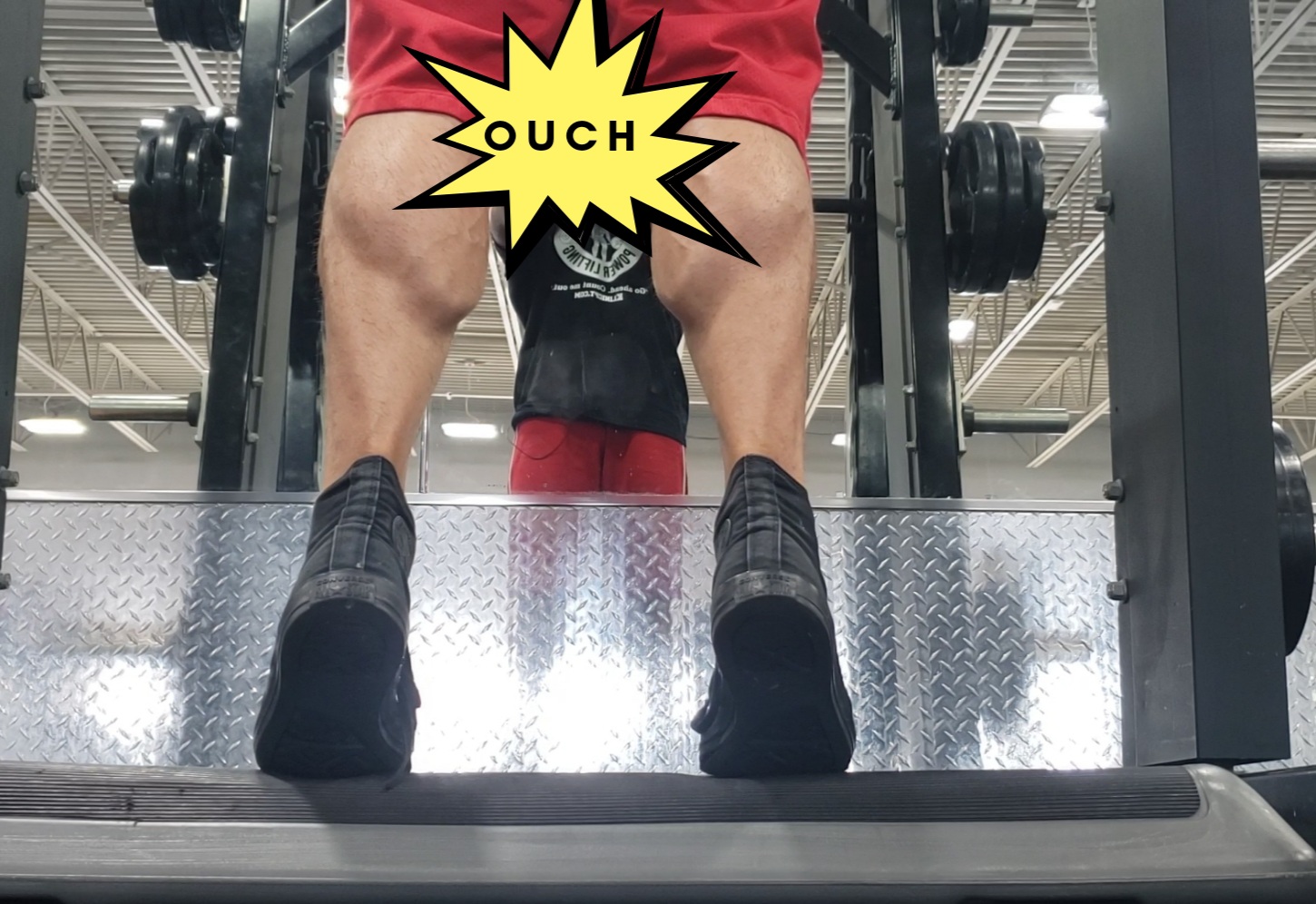A friend, teammate and iron brother, Steve Brock, fractured his right humerus while benching in a poly shirt in 2020 which led to a rotator cuff repair and bicep tenodesis. He completed PT with me, but as time passed Steve found he was losing more mobility. The surgeon diagnosed him with severe arthritis, which can be anticipated given his powerlifting background. Consequently on 6/12/23, he underwent a right shoulder hemiarthoplasty at IL Bone Institute. We approached the surgery using the same precautions as a full total shoulder replacement for safety. The movement of throwing a ball, or reaching under a squat bar, is abduction combined with external rotation. This movement needs to be protected in the early stages of rehab to prevent the newly reconstructed shoulder from dislocating. Mr. Brock has amassed an 1100 lb squat at 50 years old, competed in the WPO, and has taken first in multiple IL State meets.

We began the first week of PT, 2 days post op. He arrived with his sling, which by his protocol is supposed to be worn for the first four weeks. He appeared like he just wrestled a gorilla: bruised & swollen throughout the chest, torso and arm. Steve denied taking his medications. One, he had to drive an hour to see me, and two, to accurately gauge his pain. He started with 90 degrees of passive flexion, abduction (arm out to the side) and 35 degrees of external rotation (to reach behind the head) and 45 degrees of internal rotation (to reach behind the back). I wasted no time stretching him (safely), massaging the edema out of his arm, Rock Taping to improve lymph flow and instructing exercises for home. This included light isometrics for the cuff and scapular muscles, and pulleys for passive range of motion only. I advised him when he was at home to get out of the sling while resting and then ice.


Tom Tip: Early in my career when I treated patients who stayed out of their sling, against my advice, I found them to have smoother rehab. I deduced they didn’t get hurt, and maybe I should rethink my approach. First, the sling can create a psychological “crutch” to a patient’s psyche. What I mean is, the longer the patient goes wearing it without beginning PT, the more afraid he or she will be to move the limb. Therapists see this often. Protecting an operated shoulder is the number one priority. This does not mean I am reckless, like encouraging patients to start shoulder pressing 10 lbs overhead two days after surgery. If you are in a confined and safe environment, like your home, show your body it is permissible to move the limb. If the arms increases in swelling or pain, then get back into the sling because that is a sign the shoulder needs to recover. The longer the shoulder goes without movement, the more scar tissue will build up. This makes mobility harder to achieve, because more pain & muscle guarding will occur with stretching. Refer to The Fuzz Speech on YouTube to understand more about scar tissue build-up, https://youtu.be/_FtSP-tkSug?si=9iwvhCil-8SbJENT.
Steve Tip: “Surgery should be a last alternative. As with anything technology improves with time, less invasive procedures and device advancement lead to better recovery outcomes. I could have elected to have the hemiarthroplasty procedure 4 years ago. The time for me was not right and I was at a point I could still work around the lack of mobility and pain by focusing on exercises to increase the range of motion. As a result, the humeral head device now has a much shorter stem resulting in less bone loss leading to better recovery outcomes. Both shoulders had now got to the point the obstruction was becoming dangerous as my moments were out of balance. So, it was time.”
As Steve and I began Week 2 of PT, 9 days post op, we noticed bruising decreasing from the Rock Tape. We got to work blasting scar tissue along his back, shoulder, neck and arm. I used the Graston Tools to scape his upper body, and my hands for lymph massage (what joy!). Since the sterri-strips began falling off we started scar massage. Increased bruising can be anticipated because the deep tissue massage brings the dead blood to surface, making room for fresh, new blood. We initiated very light active-assisted range of motion (AAROM) exercises using the pulleys, cane and Swissball. Already, you could see in Steve’s face the confidence returning. His report of popping and clicking he had prior to surgery was already gone. His edema was reducing so I measured his active flexion: 60 degrees, abd: 57 degrees. Passive ER was up to 60 degrees and IR increased to 66. His passive flexion had already sling shotted past 150 degrees!



Tom Tip: A physical therapist should spend a good 30 minutes of manual therapy each session when working with athletes. It’s important to instruct new exercises each week and a prescribe a detailed home program, preferably in the gym. Besides the numerous benefits of manual therapy (reduced pain, reduced swelling & guarding, enhanced scar pliability), manual therapy creates a bond between patient and therapist. I am a believer in positive energy transfer. If your PT does not give you your deserved time, then he or she is either working in a mill, lazy or full of too much pride thinking exercise will cure all. By not giving athletes a detailed exercise regime, they are more likely to jump ship for ‘non-compliance,’ when in fact it was the therapist not doing their job.
Steve Tip: “You are responsible for building the “A-Team”. Do your research, ask around to competitors who have made a full come back. Only focusing on the surgeon is a common mistake. Their success is typically measured on how well the surgery goes. Select a Physical Therapist that has a proven track record of getting athletes back on the field as they once were. Look around if most of the clients being worked on are from a workman’s compensation claim or are older than your grandparents you are probably in the wrong spot.
Do your homework. Write out a plan. What are your goals? How much time do you have available to dedicate to recovery? Will your surgeon’s practice work with your chosen Physical Therapist? Are there personal challenges occurring in your life that could impact your recovery? know the financial and personal cost of the recovery from cut on the table to fully back on the field.”
By the third week of PT, 16 days after surgery, Steve had already returned to light Safety Squat Bar Squatting. That’s how good he was feeling, but he wasn’t being a moron lol. He alerted me of increased edema along his incision. That was his body’s way of telling him to slow down a bit. When I stretched his shoulder he denied any clicking or popping, and I felt no muscle guarding in the deltoid or lat muscle. We taped his bicep to increase lymph flow along the incision and increase scar pliability. In just one week his active flexion had increased to 120 degrees, and his abduction to 77 degrees! This week is when we got to work rebuilding the rotator cuff muscles using bands, and weights on the table for the scapular muscles. As expected, Steve had no problem with these exercises, so I tossed in TRX movements for stability. No green light was given for pressing yet.



Tom Tip: A healthy TSA program should start out with RC strengthening early in rehab, followed by sufficient posterior chain strengthening and then finishing with pressing movements. As a general rule I advise 2:1 back (or pulling) to chest (or pushing) exercise ratio, similar to focusing on posterior chain strengthening during PL programming. Otherwise, tendinitis can be predicted to occur in the bicep, rotator cuff or sub-acromial bursitis. I use PNF patterns, rhythmic stabilization and manual resistance to gauge the strength in multiplanes.
Steve Tip: “Lean into the pain. In the beginning pain will be the indicator that allows you to know the boundary of the movement. As the tendons heal start to push the boundaries. We often want to use momentum or stop short of the pain point. This leads to recovery stagnation. Each time push a little past your last threshold. Treat your recovery just like a linear training plan. Keep a log of the physical and mental progress.”
Week 4 of PT was 23 days post-op. Steve’s edema along his incision was reducing with the ice and tape. He stated his shoulder “felt great.” His active abduction increased to 90 degrees and flexion had towered to 140 degrees. I anticipate his abduction to lag because his supraspinatus had atrophied over the previous 3 years from arthritis, pain and disuse. He was permitted to begin deadlfits going into Week 5 of PT.
We knocked down one obstacle with the edema along his scar, but muscle soreness had now crept in at the one-month marker. Due to feeling great his activity level had increased and his body wasn’t prepared. Week 5 of his protocol called for sling removal, to put into perspective his progress. The next two weeks we backed off the progressive strengthening and refocused on building fluid range of motion. Steve was able to reach behind his back with assist to the second lumbar level! He had not performed this motion in ten years. You can imagine a specific functional activity in the bathroom why this movement is important.

Built like a powerhouse, Steve’s main goal was to reach behind a squat bar. That means regaining as much external rotation as possible. With my assist we could get him to 65 degrees at 1.5 month post op, but he needs close to 90 degrees to get under the bar. “My assist” comes with my evil grin, aggressive stretching, mob’s and deep tissue work. His manual never slowed since his first day. Two months into PT Steve now had 161 degrees of active flexion and 96 degrees of abd. To quote his PA at a follow up, “You may never get the same motion prior to surgery.” We both immediately took this as a challenge.
Tom Tip: I encourage all my patients to make their f/u appts with their surgeons and not the PA’s. This is nothing against PA’s, but I want the person who put me back together to answer my questions. Most PA’s come with less experience and are strictly by the book. You have the right to see your doctor, even though the system is set so you see the PA’s after surgery.
At two months post op Steve was making more progress in the gym than PT. In fact, there is a point in rehab where the gym has more resources than my clinic. We gave him the green light to begin pressing with dumbells and barbells off boards. Building his RC and posterior chain helped with the “cushion” of stability for pressing. However, we hit one snag. As the barbell came closer to his chest Steve’s humerus “slid inferiorly.” He described it as a shift. What happened was he lacked enough internal rotation, so I instructed him on the sleeper stretch for home, and I spent more time in the clinic regaining IR. Running into obstacles periodically is how rehab goes. Progress is never linear.

Steve’s attendance to therapy was not as crucial months 2-4. He had obligations to work and his family. We routinely kept in contact via phone and in person. PT was mostly used for maintenance with manual therapy techniques, and he was compliant with training independently. The “sliding” sensation slowly disappeared. Bicep tendinitis did stick his nose through out rehab process, even though we tried our best to squash it. Icing, massage or NSAIDs do help along with isolated strengthening. Steve had his left shoulder replaced in November 2023. Because of the preop work we performed on his left shoulder the weeks leading to the surgery, Steve felt he was weeks ahead of where his right shoulder was at the same time. Treating each patient like a person instead of a number is how rehab should be completed.
Steve Tip: “You must be willing to be all in for a full recovery. Mobility, tendon strengthening, and joint care should now be a focus of everyday life. In the beginning isolation movements will be the key to restoring strength and balance. Focusing on all 3 phases eccentric, isometric and concentric. Again, lean into the pain in with a controlled movement. In time your will incorporate compound movements with same attention and control.”

To follow more of Steve’s journey, status updates or questions he can be reached at on Messenger or his IG @bfd4949. Video footage of our story can be found on YouTube: https://youtu.be/JqVylK7feLM?si=7w4GtOxYEVkI0zOm.





3 Responses
What a great read! Thank you so much for sharing Tom! I have been putting off shoulder replacement since 2018, now I see new light on the horizon……….
❤️??
You a tough s.o.b. Awesome read big dog truly inspiring
Great work Tom and Steve! Thanks for sharing the whole picture of this rehab. Keep moving forward!